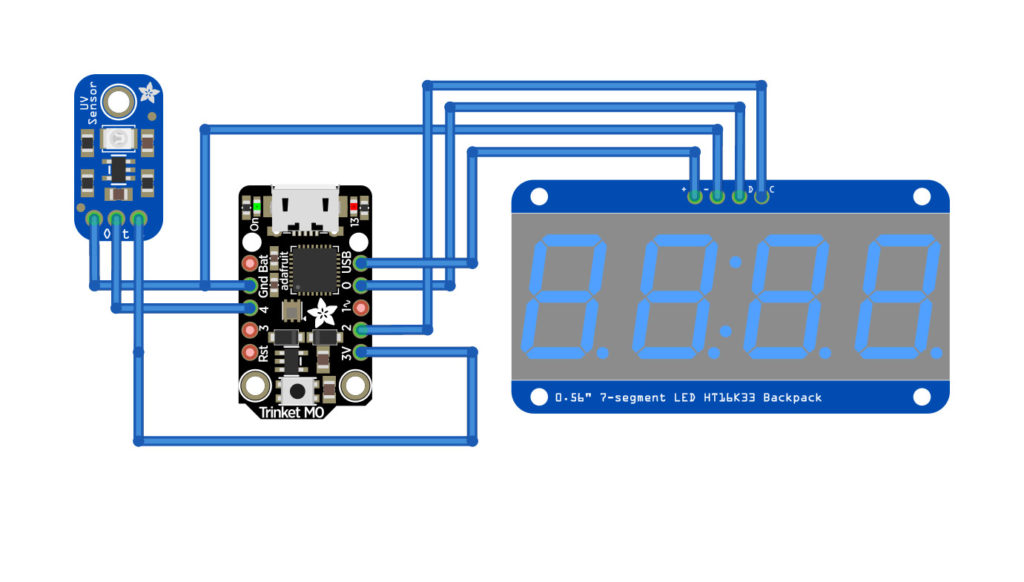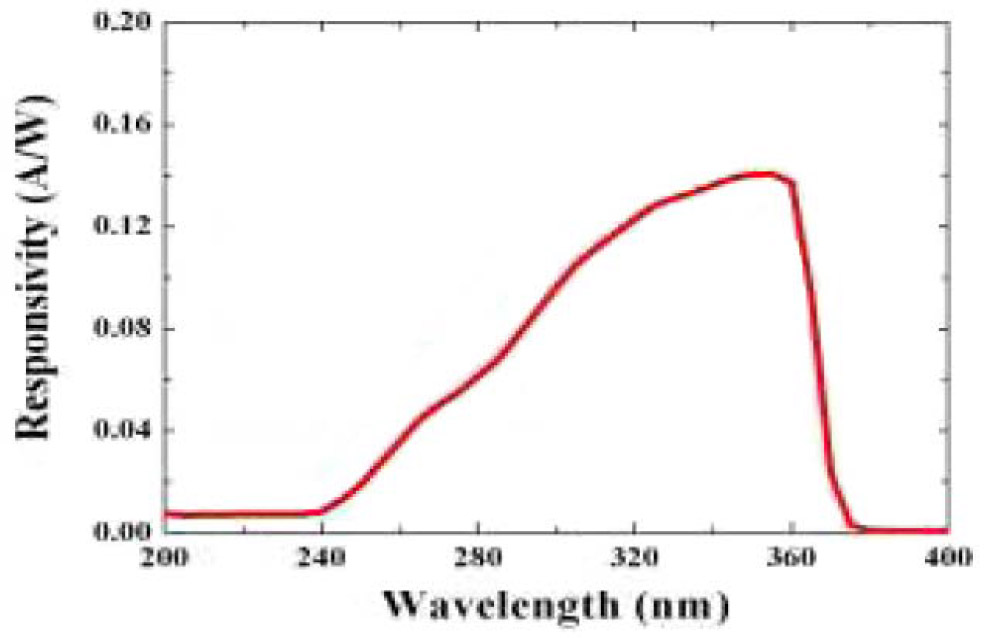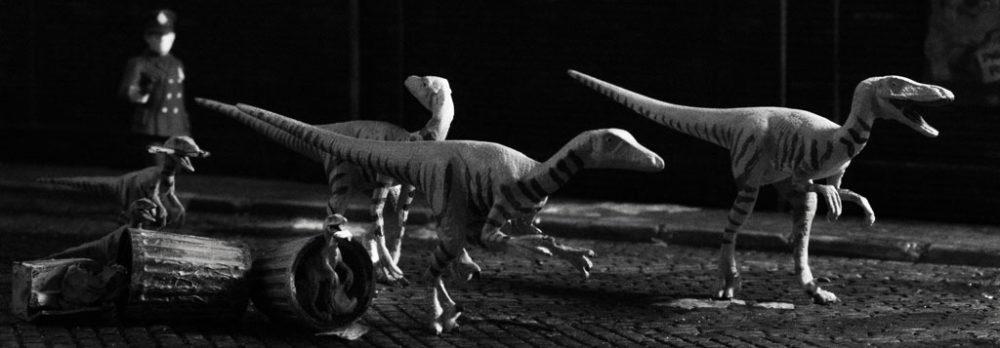At some point I want to start working with gum bichromate and other processes that are UV sensitive. I thought it might be nice to make a light meter that is sensitive in the UV region. I am not concerned with wavelengths above 365nm so this sensor works well for me.
Presently this unit is a simple un-calibrated unit.
Parts
Schematic

The Arduino Code
#include <Wire.h>
#include <Adafruit_GFX.h>
#include "Adafruit_LEDBackpack.h"
Adafruit_7segment matrix = Adafruit_7segment();
int UV_In = A4;
int UV_Read=0;
void setup() {
matrix.begin(0x70); // pass in the address
}
void loop() {
UV_Read=analogRead(UV_In);
matrix.print(UV_Read);
matrix.writeDisplay();
delay(100);
}
New code that accumulates and displays on a 4 digit display.
#include <Wire.h>
#include <Adafruit_GFX.h>
#include "Adafruit_LEDBackpack.h"
Adafruit_7segment matrix = Adafruit_7segment();
float UV_accumulation = 0;
int UV_In = A4;
int UV_Read=0;
void setup() {
matrix.begin(0x70); // pass in the address
}
void loop() {
UV_Read=analogRead(UV_In);
UV_accumulation=UV_accumulation + UV_Read;
matrix.print(UV_Read);
matrix.writeDisplay();
delay(500);
matrix.print(int(UV_accumulation/180.018));
matrix.writeDisplay();
delay(500);
}
I based the scale factor on an arbitrary max reading of 300 units and an exposure of 60 minutes. If you feel compelled to do this with absolute science and absolute units, this ain’t it, but it’s a start.

This is what I learned and I have never, to my knowledge, damaged anything. It is presented here as a concept, not as an implementation. User results may vary. Do not attempt, professional driver on closed course. Contact your physician if any of the following symptoms appear…etc.
